‘Life is not a question of points, but a question of flow. It’s the flow and the hide and seek of flow that matters,’ reads a page in a notebook that belonged to Eileen Agar. Flow – essential for an artist whose materials were thrown up by the sea. Agar moved with the tide, combing beaches in Dorset, looking for driftwood and shells, or for human-made objects rendered organic, surfaces smoothed or encrusted, by their submersion in the sea. On the coast of Brittany, she saw rocks shaped like limbs or buttocks. She looked for the surreal in nature, opened her eyes to its symbols. Seeing the forms of trees or pebbles, she was, she wrote, ‘astounded to discover that dumb nature makes an effort to speak to you, to give you a sign […] to symbolise your innermost thoughts’. Hide and seek.
At the Whitechapel Gallery, Agar is considered at a distance from Surrealism, the movement with which she became associated in the 1930s and for which she is still known. Rather, her development is staged through her deviation from her contemporaries, her individualistic fusing of the playful workings of the unconscious with the natural world, female eroticism and myth. In the early 1930s, after a period of experimentation in Paris, Agar – who was born in Buenos Aires but had lived in England since childhood – felt she had discovered a higher feminine order capable of counteracting the ‘rampant and hysterical militarism’ of the decade: ‘Womb-magic’, an endlessly cyclical, generative state. It was an absurd (and absurdist) vision, and yet its optimism, its openness to irrationality and to organic interrelatedness would buoy Agar’s work for the rest of her life.
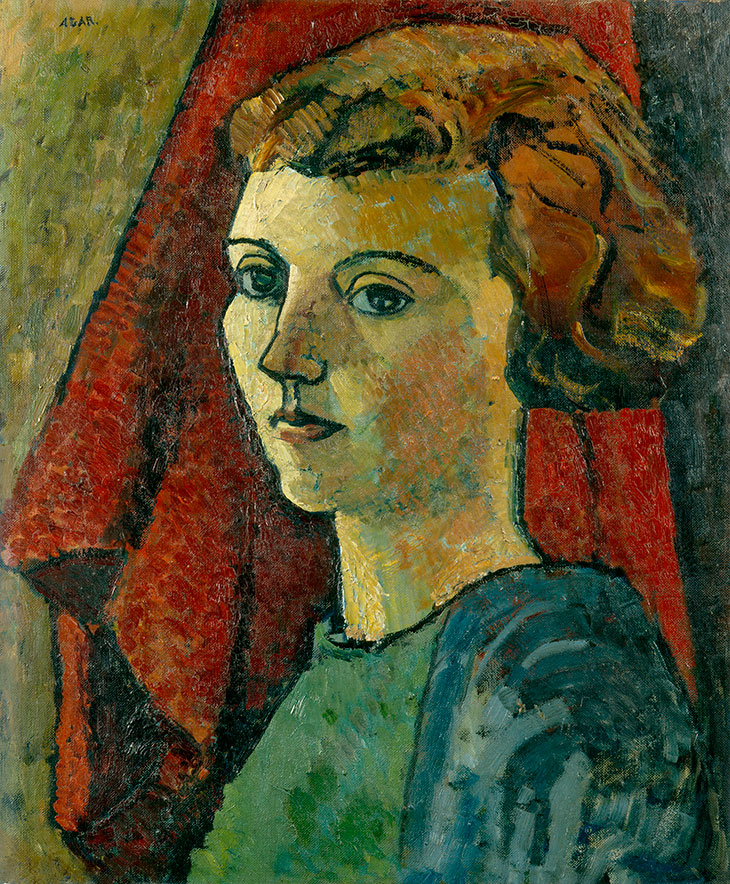
Self-portrait (1927), Eileen Agar. ©Estate of Eileen Agar/Bridgeman Images
Of the many in the exhibition, three self-portraits show the emergence of Agar’s artistic identity. Self-portrait (1927) presents the artist formally in front of a red drape, her face lit by greenish window light, her features and bobbed hair outlined in thick impasto. The painting, made in London directly after Agar left the Slade, was both departure and arrival. She had ‘thrown off the shackles’ of her tutors and completed ‘what may be considered my first successful work’. It’s not difficult to see how Agar would then journey into cubism in Paris, where she studied painting with the Czech cubist Frantisek Foltyn. Next, in Self-portrait – Eileen Looking Out (1935), the artist stands with exaggerated confidence, cupping a hand over her eyes in order to see. Her head, neck and arm are enveloped in an egg-shaped halo of yellow light, its shape mirrored below in the palette she holds in her hand. Having met the Surrealists Breton and Éluard, Agar was drawn to the non-naturalistic possibilities of surreal imagery. The palette – along with an owl, a hand, a box of matches, a violin – would reappear in her paintings and collages as both moniker and motif. Yet it is a third self-portrait which shows Agar taking flight. Ladybird (1936) is a black-and-white photograph of the artist taken by her partner, the Hungarian writer Joseph Bard, in which she holds a sheet of transparent material in front of her naked body. Over the top of this image she drew thick, undulating lines. Covering her breasts is a wheel-like arrangement of abstract shapes, but there are also stars, hands, discs and a ladybird. The transparent sheet shimmers, the lines ripple like seaweed or coral under water, and there are shell-like dots along her fingers and toes. The self-portrait shows Agar’s total appropriation of her own image: like Botticelli’s Venus, she sails in from the sea, emerging fully formed into the patch of sunlight on her studio floor.
Ladybird was completed in the same year Agar was included – as one of very few women – in the ‘International Surrealist Exhibition’ at the New Burlington Galleries in London. The exhibition was notorious, yet Agar remained ambivalent about the label that made her name, preferring, as Paul Nash later observed, to think of herself as a surrealist with a small ‘s’. Unlike the Surrealists, Agar was sceptical about painting directly from dreams, but nevertheless she believed the unconscious to be a vital space in which the artist could discover freedom and pleasure. She developed her own ways of looking and finding.
Beachcombing became a favourite working method. In 1935, Agar met Nash in Swanage in Dorset, and together they trawled the sands, painting and photographing their treasures: driftwood, fishing nets, an anchor chain metamorphosed into a shell-encrusted snake. It was a meeting of minds: Agar sent Nash a box of painted shells he kept in his tie drawer; in his letters, Nash called her a starfish and said he wanted to kiss her ‘cool wet mouth’. Agar continued to look. In 1939, while staying in the French seaside town of Carqueiranne, she saw a fisherman pulling up a large fragment of a Greek amphora in his nets and told him, ‘I’ll have that.’ She placed a ram’s horn from Cumberland at its base and a dried starfish on top, perched jauntily like a hat. Like her other assemblages, Marine Object (1939) is a balancing act, a playful and serendipitous dialogue between shapes (the pointed starfish, the rounded horn), textures (the encrusted jar) and organic forms.
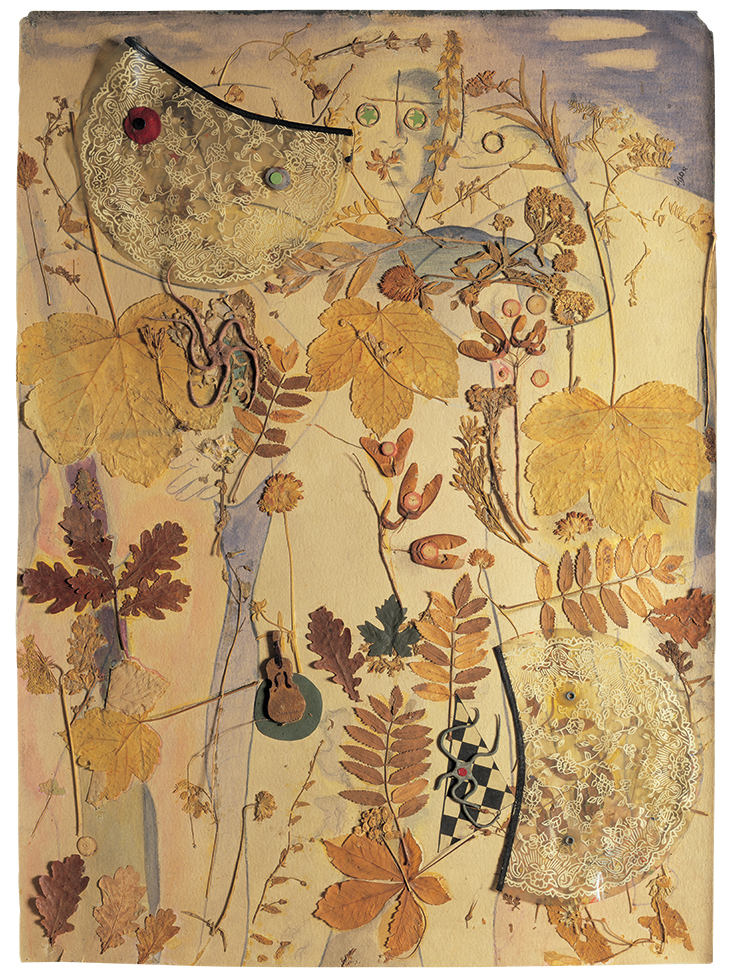
Untitled Collage (1936), Eileen Agar. Courtesy The Mayor Gallery; © Estate of Eileen Agar/Bridgeman Images
Agar applied the same principles to her collages, which she began to create in the mid 1930s, continuing to draw her ideas from the natural world. Marine Object was followed by Marine Collage (1939), a grid of classical profiles in silhouette, each head-space flourishing with marine life, as if caught in the act of dreaming watery dreams. In Untitled (Landscape) she layered a horse chestnut leaf over a photographic print and coloured the image with blue chalk; in Philemon and Baucis (1939), she combined collage with woodgrain frottage to pun on the story of an elderly couple who turn into trees. There are other objects, too: plastic doilies and starfish, a small violin. Agar called these her ‘fantastic bric-à-brac’ which she needed ‘in order to trigger my imagination’. But the landscape also caught her eye. Holidaying in Ploumanach in Brittany in 1936, she gazed at the rocks ‘as if nature had arranged a show of sculpture in the open air’. Hurrying to buy a Rolleiflex, she took almost 50 photographs, placing the rocks carefully within each frame, capturing their creases and striations, their juttings out, the shadows of their hollows and curves. Her photography is one of the many revelations of the exhibition.
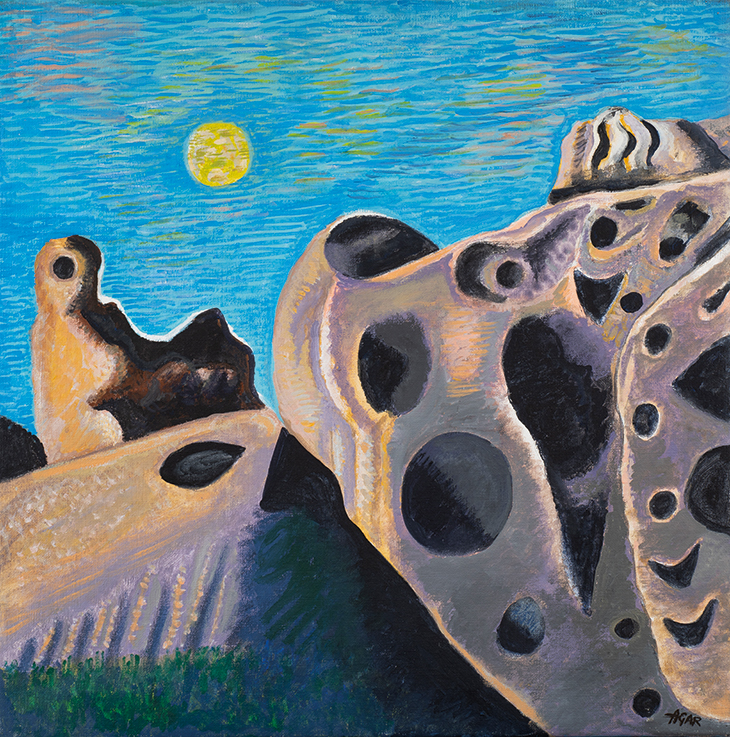
Rock 3 (1985), Eileen Agar. Courtesy Redfern Gallery; ©Estate of Eileen Agar/Bridgeman Images
Agar worked vigorously for 70 years. The war nearly put a stop to her creativity, but she revived herself, determined to find the fun in the world again. She continued to experiment with new materials and techniques – automatism, poured painting, enamel, acrylics. Acrylic suited her. In the 1980s, she returned to her images of the rocks at Ploumanach, painting them in startlingly bright colours and determining their surfaces anew. This enduring creative drive she called ‘the spirit of play’. ‘In play the mind is prepared to accept the unimagined and incredible,’ she wrote, to ‘yield oneself to a kind of magic’.
‘Eileen Agar: Angel of Anarchy’ is at the Whitechapel Gallery, London, until 29 August.
From the July/August 2021 issue of Apollo. Preview and subscribe here.
Unlimited access from just $16 every 3 months
Subscribe to get unlimited and exclusive access to the top art stories, interviews and exhibition reviews.

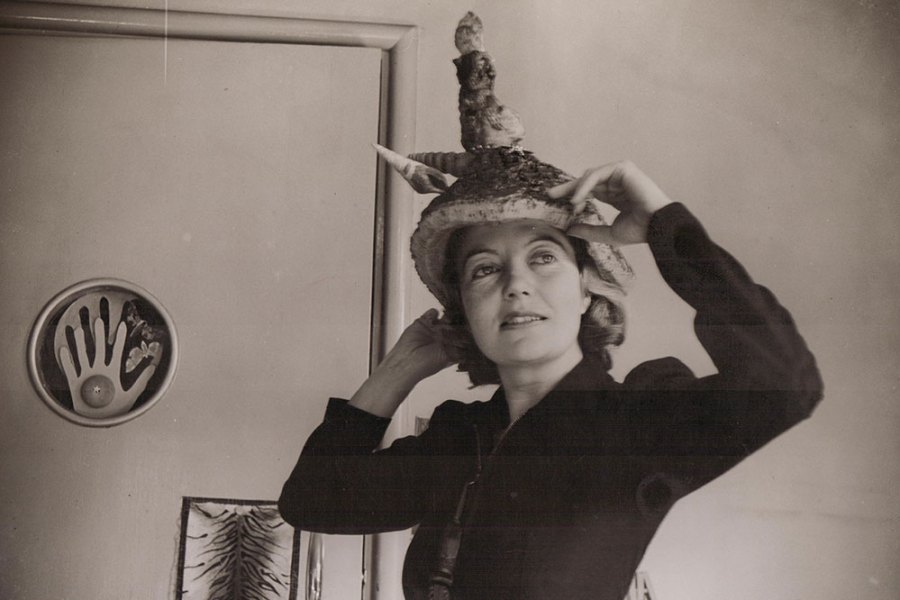
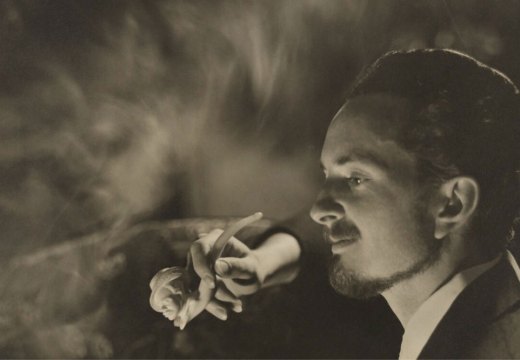
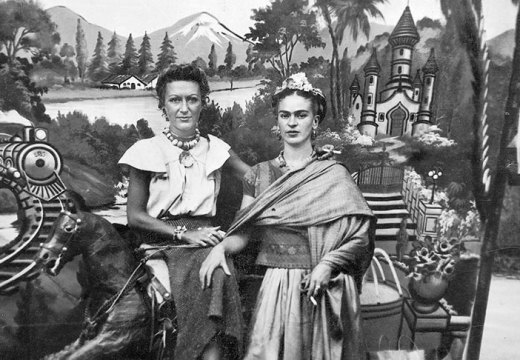
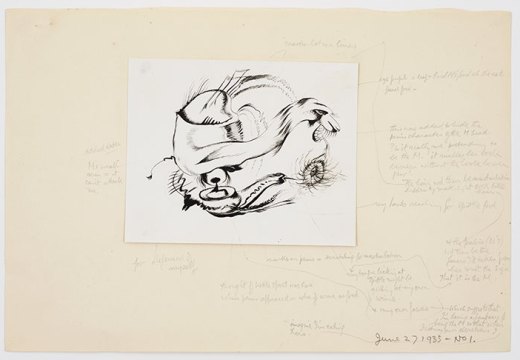









![Masterpiece [Re]discovery 2022. Photo: Ben Fisher Photography, courtesy of Masterpiece London](http://www.apollo-magazine.com/wp-content/uploads/2022/07/MPL2022_4263.jpg)
Why are fathers so absent from art history?